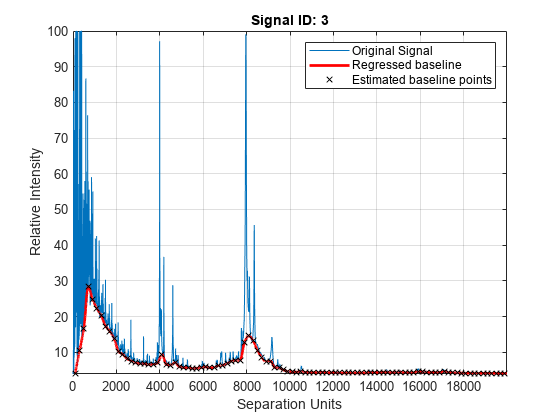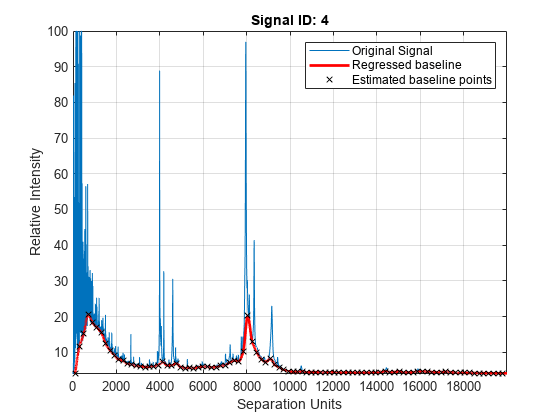msbackadj
Correct baseline of signal with peaks
Description
yOut = msbackadj(X,Intensities)
Estimate the baseline within multiple shifted windows of width 200 separation units.
Regress the varying baseline to the window points using a spline approximation.
Adjust the baseline of the peak signals supplied by the input
Intensities.Return the adjusted intensity values in the output matrix
yOut.
yOut = msbackadj(X,Intensities,Name,Value)msbackadj(X,Intensities,'WindowSize',300) sets the width of the
shifting window to 300 separation units.
Examples
Input Arguments
Name-Value Arguments
Output Arguments
Version History
Introduced before R2006a
See Also
mspalign | msdotplot | msalign | msheatmap | mslowess | msnorm | mspeaks | msresample | msppresample | mssgolay | msviewer
Topics
- Mass Spectrometry and Bioanalytics
- Preprocessing Raw Mass Spectrometry Data
- Visualizing and Preprocessing Hyphenated Mass Spectrometry Data Sets for Metabolite and Protein/Peptide Profiling
- Differential Analysis of Complex Protein and Metabolite Mixtures Using Liquid Chromatography/Mass Spectrometry (LC/MS)

